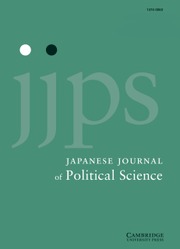No CrossRef data available.
Article contents
Measuring Judicial Independence Reconsidered: Survival Analysis, Matching, and Average Treatment Effects
Published online by Cambridge University Press: 10 February 2015
Abstract
This article reconsiders how to judge judicial independence by using the Japanese judicature, one of the allegedly-most dependent judiciary branches. In their influential work, Ramseyer and Rasmusen (2003) argue that judges who once belonged to a leftist group take longer to reach a ‘moderately prestigious status’ under the long-term conservative rule of Japan. Their method does not, however, deal appropriately with the possibility of judges not reaching this position because the judge dies, retires early, or is still at the early stage of her career. Ramseyer and Rasmusen also mistakenly assume that all judges will eventually obtain this position. This article develops a survival analysis model of judicial careers and attempts to solve the problems of censoring, left truncation, and split population. We also offer a way to utilize a matching procedure to estimate average treatment effects on censored time-to-event as well as event occurrence. We re-analyze a corrected version of Ramseyer and Rasmusen's data using their and our methods. One of the most important findings is that, contrary to what Ramseyer and Rasmusen argue, leftist judges are not discriminated against in terms of the timing of promotion.
- Type
- Research Article
- Information
- Copyright
- Copyright © Cambridge University Press 2015




